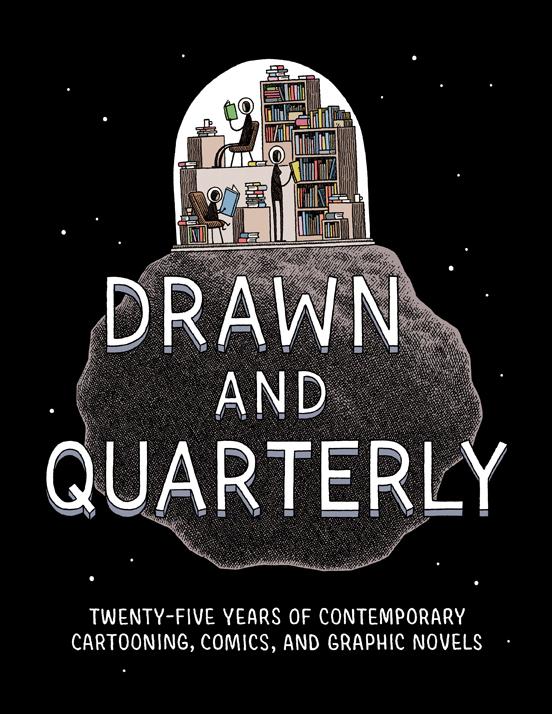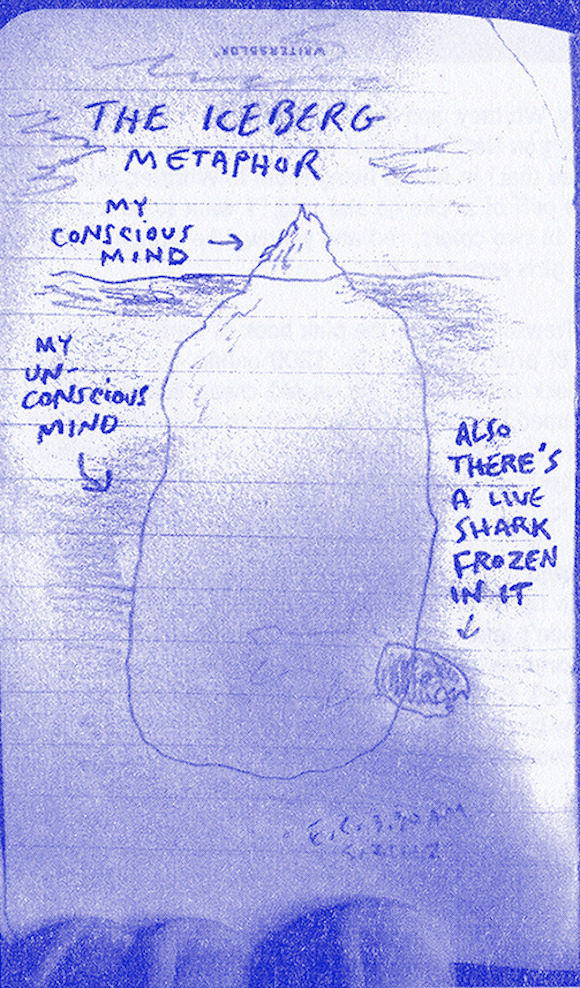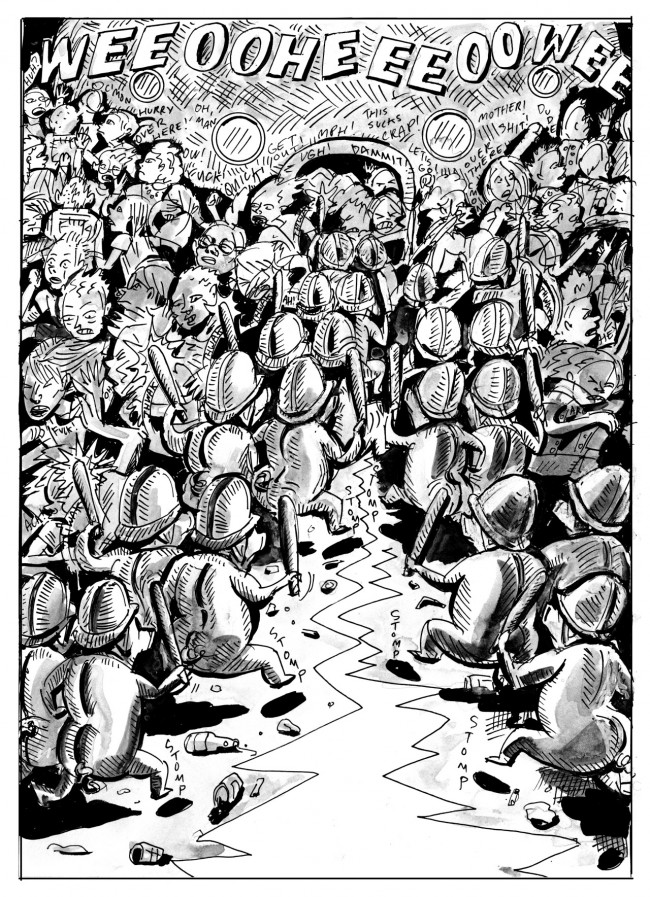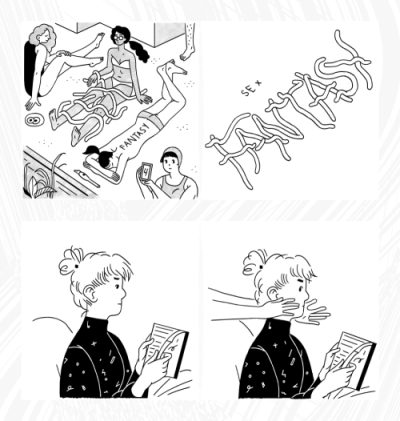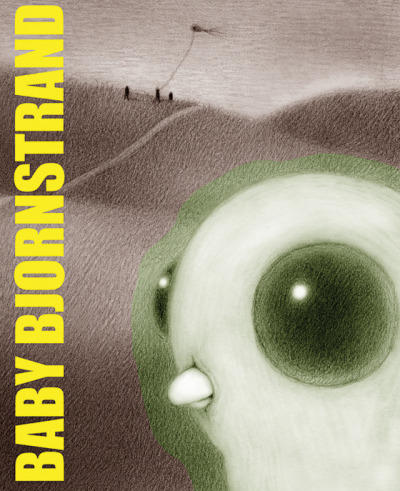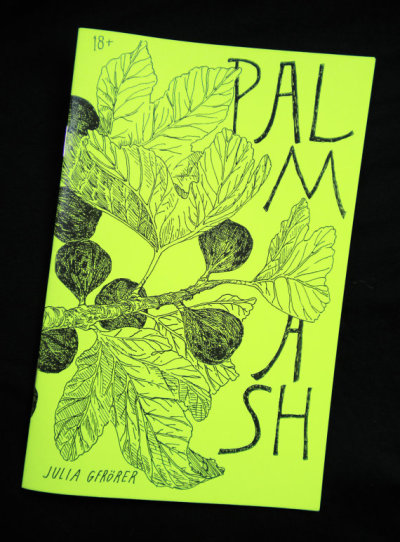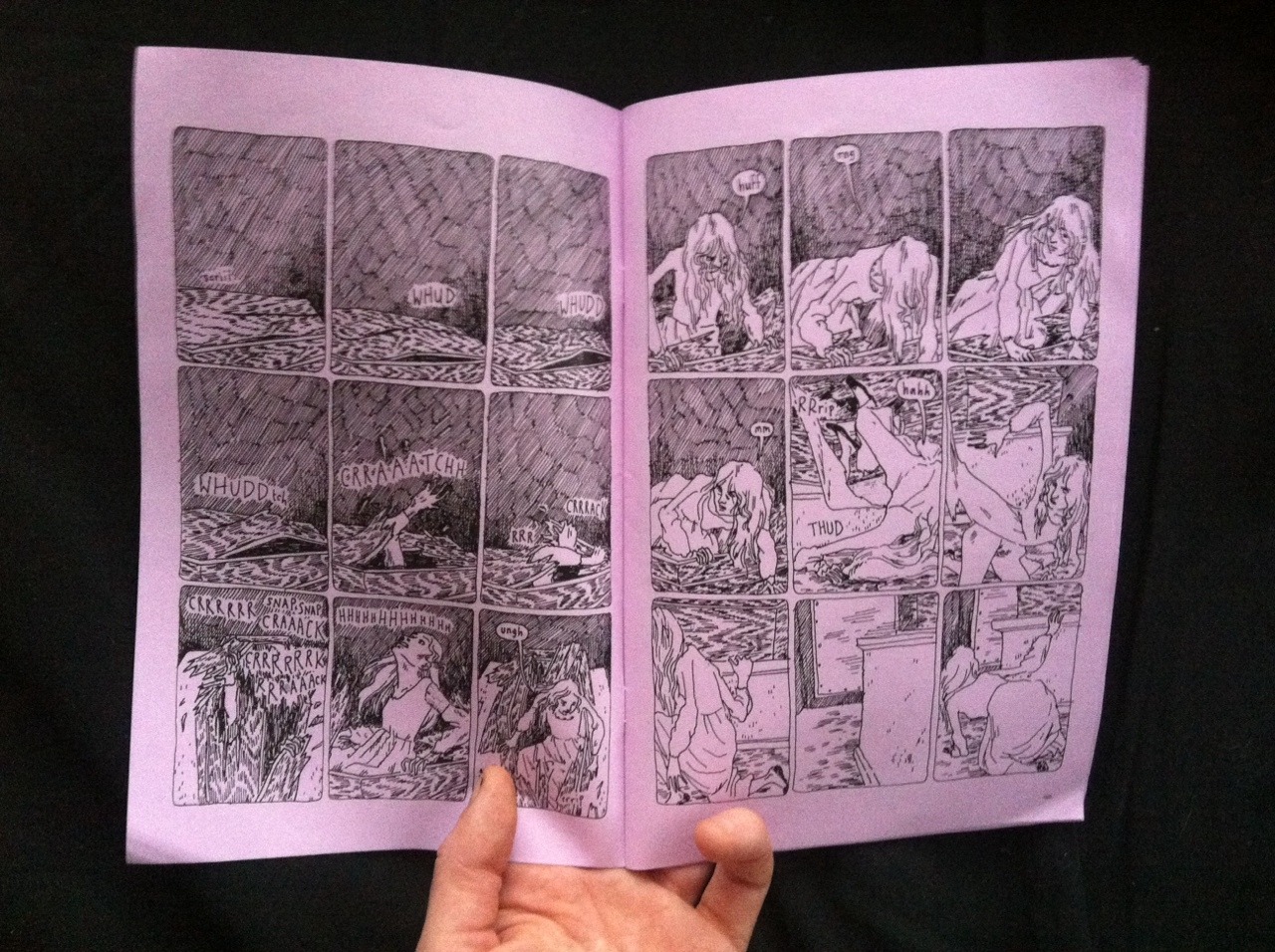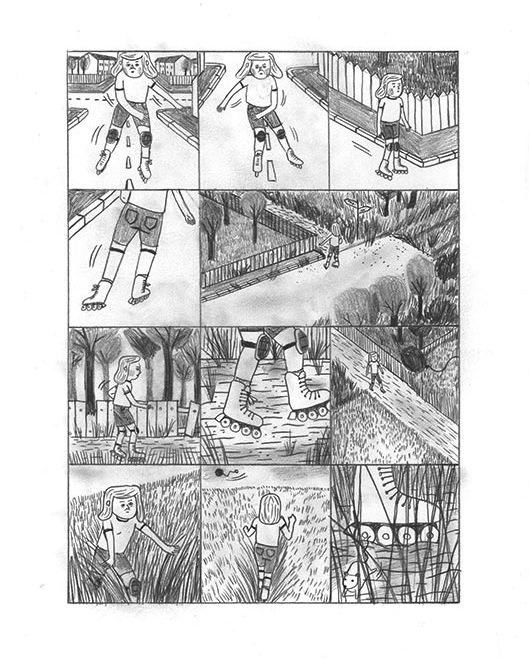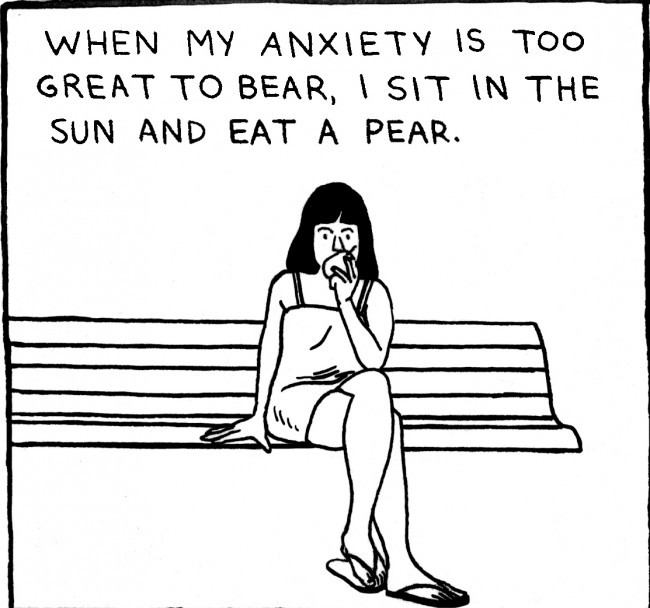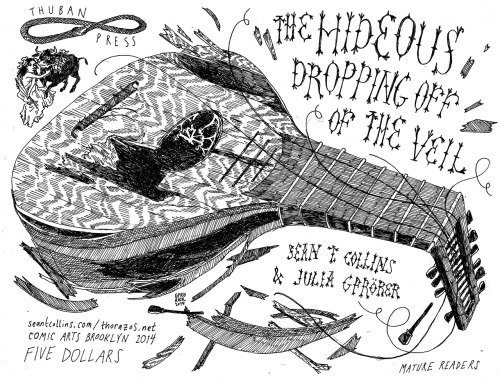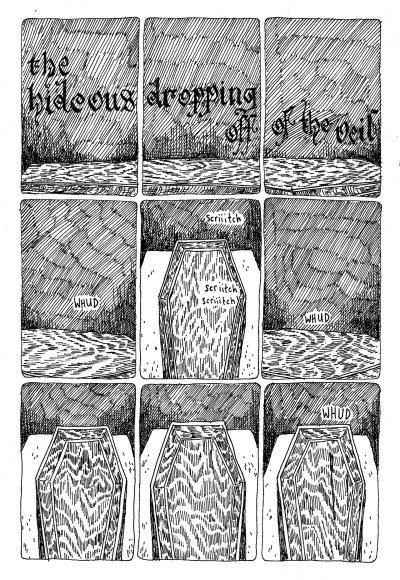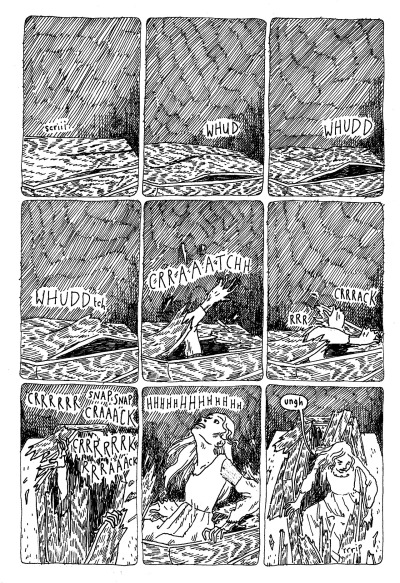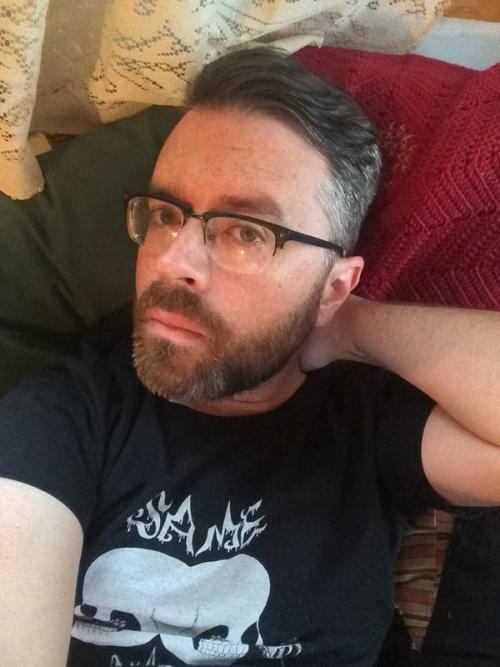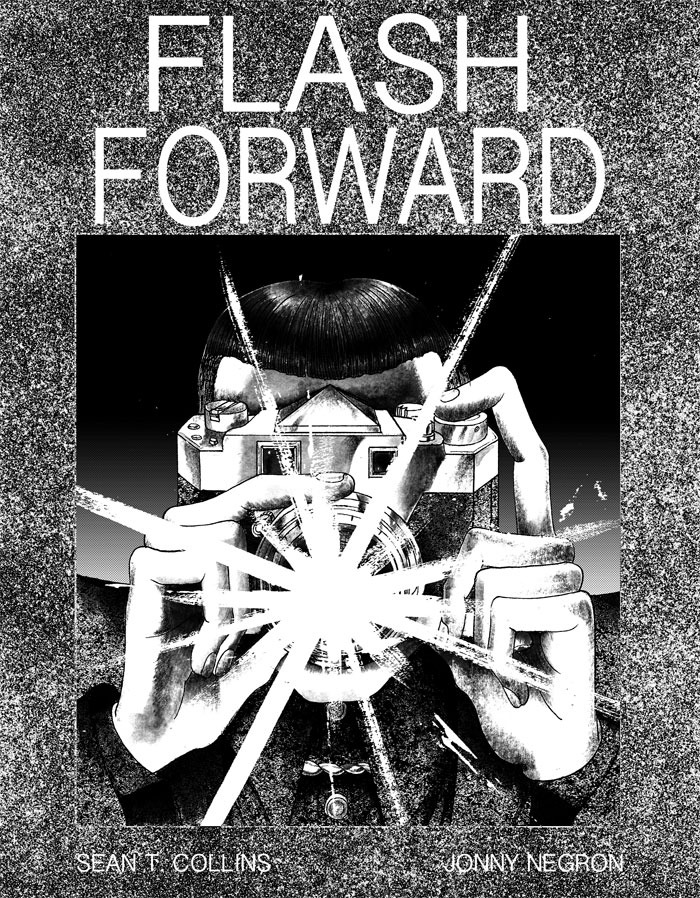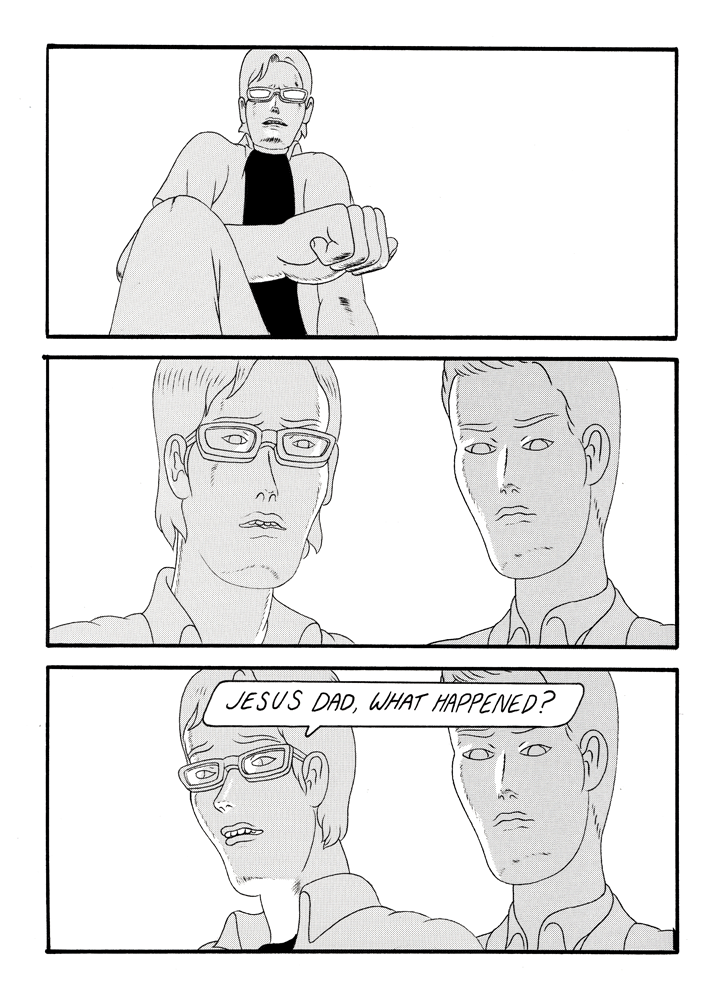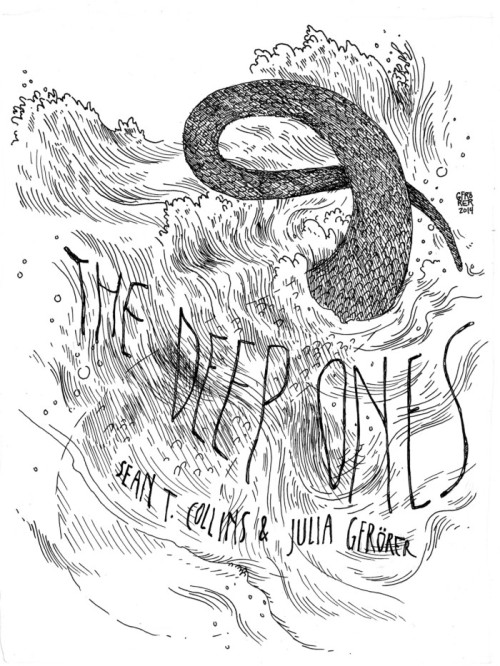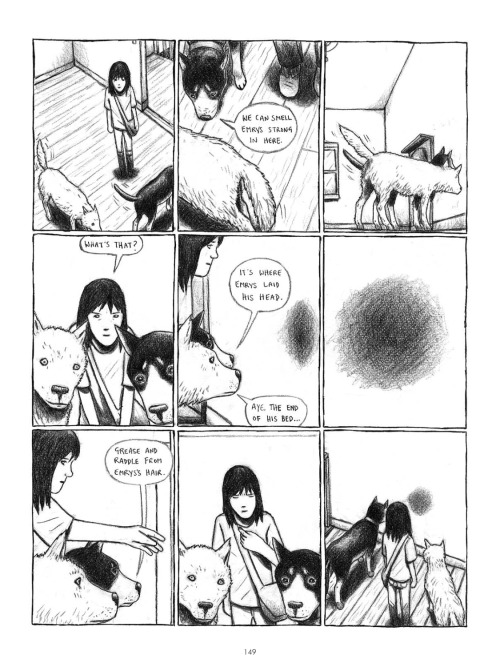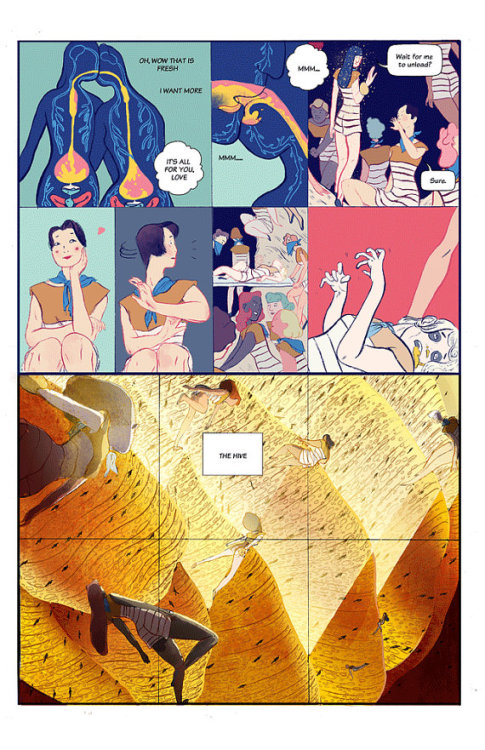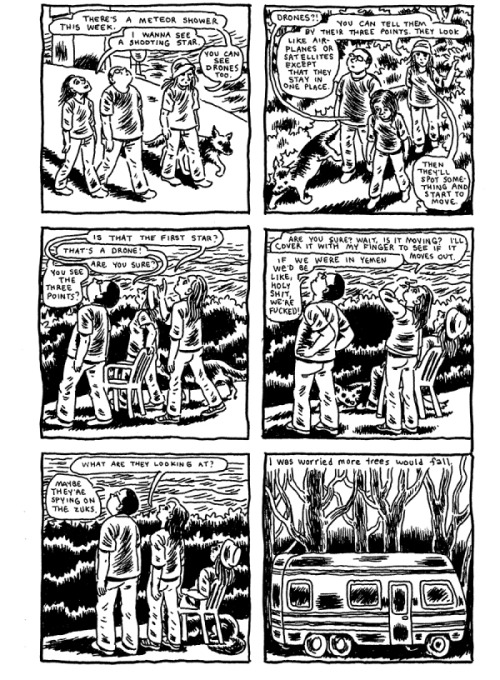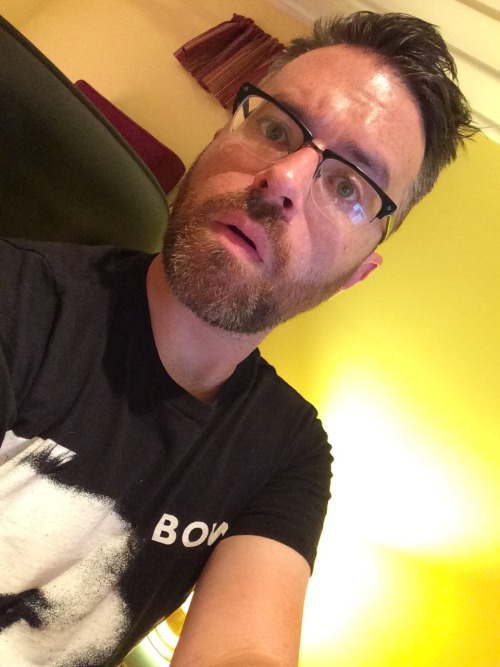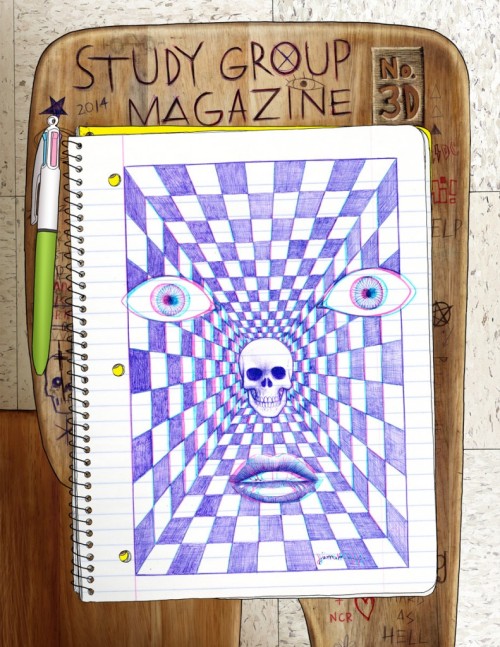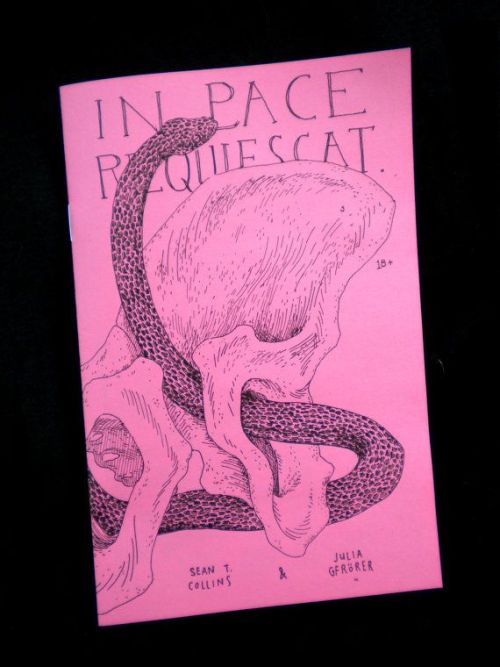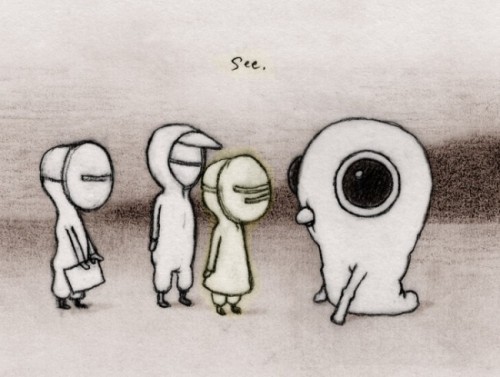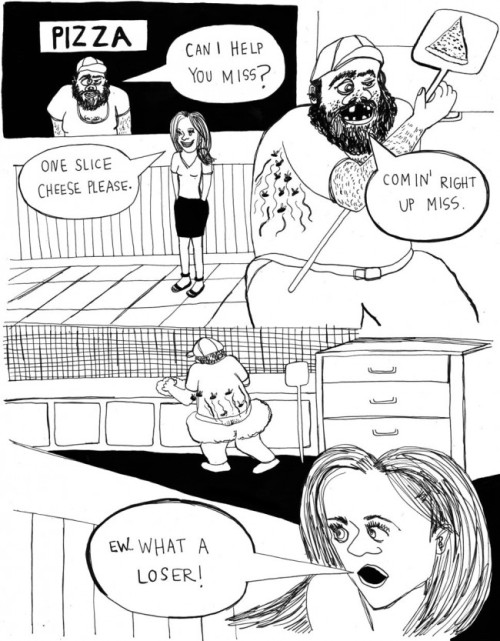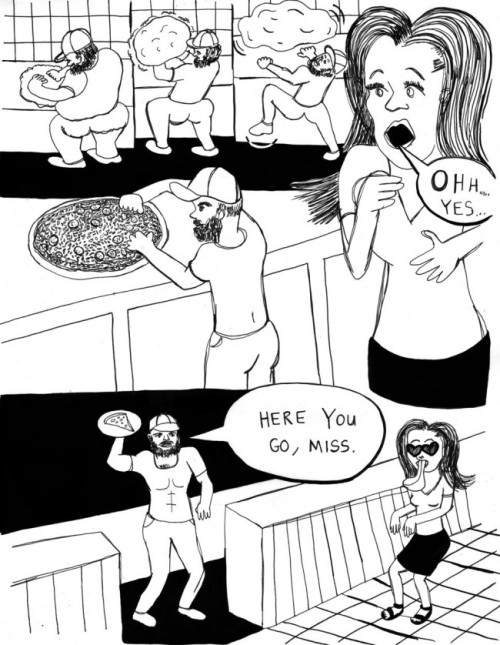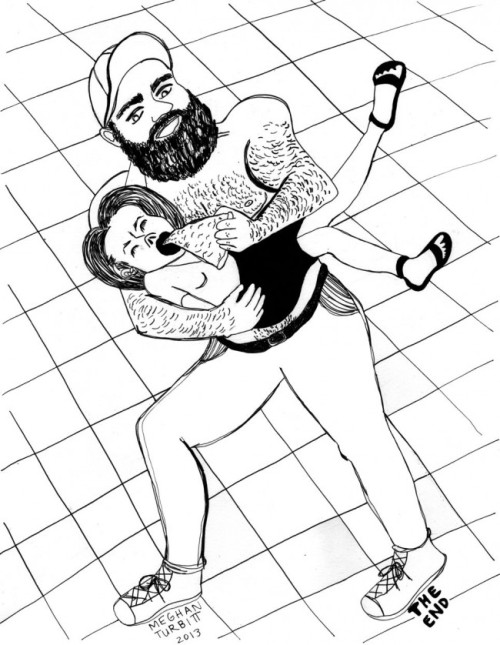Posts Tagged ‘comics’
DQ25
June 2, 2015I interviewed the great editor and publisher Tom Devlin in this beautiful book about Drawn and Quarterly, one of the best and most important comics publishers of all time. It’s out today, and it’s filled with comics by wonderful cartoonists. Check it out!
“Daredevil” thoughts, Season One, Episode Seven: “Stick”
April 23, 2015…But the biggest and funniest riff [“Stick”] played off the Daredevil comics involves the title character himself. Played by the wonderful Scott Glenn — who between this and his similarly weird role on HBO’s The Leftovers appears not so much to have aged with time but dried out like beef jerky — Stick was the martial-arts mentor who transformed Matt Murdock from a blind kid with uncontrollably sensitive senses into the black-clad badass we know and love today. As such, he’s given to a lot of portentous pronouncements: “You’ll need skills for the war,” “Surrounding yourself with soft stuff isn’t life, it’s death,” “They’re gonna suffer and you’re gonna die,” etc. In other words, he’s not a man, he’s a Frank Miller comic in human form.
Miller was just a kid trying to make his way as a comics artist in the Taxi Driver-esque mean streets of Carter-era New York City (he was mugged twice) when he parlayed a shot at the low-selling Daredevil comic into superstardom. It was he who gave the series its neo-noir makeover, incorporating techniques gleaned from American comics pioneers like Will Eisner as well as manga, Japan’s homegrown comics scene which at the time had very little readership in the West. His interest in ninjas, which he made a core component of Daredevil’s backstory, more or less singlehandedly shoved the concept into the American pop-culture mainstream: The ninja-heavy G.I. Joe characters and comics that Marvel developed owe him a great deal, and the Teenage Mutant Ninja Turtles were conceived as a straight-up Daredevil parody. (Ever wonder why the Turtles’ sensei was called “Splinter”? If you’ve met “Stick,” you know the answer.)
As time went on, Miller gave Batman an even more successful grim and gritty makeover in his seminal work The Dark Knight Returns, to which the Tim Burton and Chris Nolan movie franchises owe a massive debt. He also created series of his very own, like the hardboiled crime comic Sin City and the homoerotic historical fantasia 300, both of which became hit films. Meanwhile, Miller himself became more and more like a grizzled old hardass from one of his own comics, wearing a fedora and reminiscing favorably about the good old days when America’s heroes were of the two-fisted, square-jawed variety. So when wrinkly, stubbly old Stick compares Matt Murdock to the Spartans, “the baddest of the badasses,” it’s a 300 reference that winks as much at Miller himself as the comic in question. This helps keep his zen tough-guy routine on the show just this side of knowing self-parody, instead of the unwitting kind.
I reviewed episode 7 of Daredevil, and wrote a lot about Frank “The Tank” Miller, for Decider.
Identity Crisis
March 22, 2015Back in my Comics Journal messageboard days I was friends with a guy who was kind of a famous or infamous character on that famously or infamously argumentative comics site. This was during my morally indefensible “liberal hawk” period, and we bonded over that among other things, but aside from the hawkishness he always seemed like he was, indeed, otherwise a liberal, like I was. Then during the Obama/McCain election he essentially chose Sarah Palin over our friendship — he went completely berserk over how she was made fun of, he was one of those people who pretended to believe David Letterman made a joke about the Yankees gang-raping one of her daughters and waxed outraged about it for weeks, that kind of thing. Eventually I had to tell him not to contact me anymore, block him from commenting at my blog, and mark all the emails he ever sent me as spam just to get him to leave me alone. This was, you know, six or so years ago and I hadn’t spoken to him since.
After that he got this second career as a “funny” conservative writer for a rightwing online publication, specializing, I guess, in calling black people and anti-racist white people “the real racists” and shit like that. He made a ton of jokes about how Obama eats dogs, Michelle is an ugly person who looks like a Klingon, etc. This whole underground reservoir of racism inside him burst forth like a geyser. It’s horrifying. Every once in a while he’ll spend hours trolling a progressive writer I happen know via Twitter or wherever, and I’ll get in touch and tell my story and warn them they’ll never outlast him if they engage him, best to just ignore him.
Anyway, yesterday I went on twitter, which I’m basically off of now, to monitor reaction to my Scientology article, which I did for a few days. So I saw via retweets and progs making fun of him that he was having some back and forth with another Rolling Stone writer, whose work I admire a great deal. I saw people saying that my former friend had blocked them despite never having interacted with them in any way and wondering if he just preemptively blocked people. So I checked and, sure enough, he’d blocked me even though I hadn’t said a single thing to him in years. Sad.
I bring this up because guess what his avatar was? That’s right, it was the now-canceled Killing Joke homage Batgirl cover with the Joker menacing Batgirl. I just thought to myself, christ jesus, this is what it’s come to now for these people? Taking a cover that was disavowed by its artist, who made it in tribute to a comic that’s been disavowed by its writer, and waving it like it’s the Gadsden flag? Or more accurately the battle flag of the Confederacy? Just because it’s supposedly infuriating to the right people, in this case the dreaded SJWs? Can you imagine anything less macho and more pathetic than building your life around that kind of thing? And they’re the ones who think they’re fighting AGAINST identity politics! It’s like the nerd equivalent of supporting the Duck Dynasty neanderthal.
I actually happen to think there’s a lot of stuff that falls under the “SJW” rubric that is indeed excessive and reactionary in its own right. The Charlie Hebdothing, for example, was almost incomprehensible to me, that you’d look at a pile of corpses and your reaction would be “but the cartoons they drew before they were massacred were really problematic.” People were murdered for drawings! That’s an awesome, in the old-school sense, act to contemplate.Cerebus creator Dave Sim is an insane misogynist and Islamophobe whom I think gets way too much leeway about this to this day, but I can’t imagine having the fucking chutzpah to write a column lambasting him for this the day someone blew his brains out. You know? And I know that for a lot of alternative cartoonists older than, say, 28, the recent thing where people shut down their whole webcomic set in Japan because people on tumblr complained about it was really shocking.
But this? Running around like it’s the second coming of Wertham because a massive corporation recently retooled one of its properties and decided that visually referencing the most unpleasant part of a 27-year-old story was off-brand for its current target demographic, most of whom weren’t even born when that story came out? Insanity. I hope the SJWs make these moral morons cry themselves to sleep every night and wake up with ulcers and teeth ground to shit every morning.
STC on DeForge in RS
January 19, 2015Comics Time: Worst Behavior
January 14, 2015How do you take something as complex and confounding as the most tumultuous time in a person’s adult life and make a concise and compelling short story out of it? Annie Mok’s solution: Echo the tumult. In as-below-so-above fashion, Worst Behavior, an illustrated memoir for the “Dedication”-themed January issue of the online magazine Rookie, utilizes a hybrid format to describe and analyze a three-year period during which a host of issues that by rights would be overwhelming individually pulled Mok’s life in a dizzying number of directions. She uses prose, comics, illustration, hand lettering, sampled/disassembled/reassembled passages from her previous work, and quotes from the artists who’ve inspired her along the way to harness that onslaught in an act of creative judo, simultaneously communicating its power and demonstrating her artistic, emotional, and intellectual ability to best it.
I reviewed Worst Behavior by Annie Mok for The Comics Journal.
Say Hello, Leah Wishnia!
December 19, 2014[LEAH WISHNIA:] I honestly don’t really think too much about how my own comic work fits into the over-arching canon of alternative comics and such. I’m just trying to do work that I enjoy and that others might appreciate as well. Although I like to think of my own comics style and vision as being unique, I don’t feel that it’s necessarily at odds with other alternative comics that are being produced and distributed right now—in fact, there’s quite a few contemporary cartoonists whose output of work I totally “get,” work that seems rooted in a similar place as my own.
Indeed, though, many of my comics have featured characters that act and react quite dramatically, a kind of exaggeration of some negative attributes I see in both myself and in others. I think there’s a lot of chaos and pain and greed present in our culture right now that often goes unnoticed or unaddressed, so I like to take those negative things and amplify them until they reach absurd proportions, beating people over the head with it all until someone takes notice.
The Best Comics of 2014
December 18, 2014The Hideous Dropping Off of the Veil is now available for purchase
November 12, 2014“Is there anything more tragic than such a scene of failed self-erasure, when we are reduced to the obscene slime which, against our will, persists in the picture?” (Slavoj Zizek, The Thing from Inner Space)
“Jesus Christ.” (Tom Spurgeon)
A meditation on fucking as the final integrative attempt of a flagging psyche, on the refusal of the sensual half of the self to be repressed. It also includes incest, voyeurism and attempted murder. This comic was scripted by Sean T. Collins, and drawn by Julia Gfrörer, based on “The Fall of the House of Usher” by Edgar Allan Poe. It contains pornographic imagery and is intended for mature audiences. Xerox printed on lavender text weight paper, saddle stitched, 24 pages, $5.
https://www.etsy.com/listing/210813489/the-hideous-dropping-off-of-the-veil
Buy yourself a copy of the new comic Julia and I made! It’s filth, just as Edgar Allan Poe intended.
Comics Time: Earthling
November 12, 2014Aisha Franz’s faces are an architectural marvel. Their features bunch up in the center of great round white circle heads crowned with hair that looks sculpted from clay. They’re bookended by apple cheeks drawn with a perpetual blush rendered as circular gray scribbles, as though a physical ordeal or an uncomfortable emotion were always only scant seconds in their past. Eyebrows, wrinkles, creases, and smile lines push the eye toward the beady eyes and pug noses they ring. (The look is very Cabbage Patch Kids, but there’s a reason those weird-looking things made millions.) They broadcast emotion from the center of the head like a spotlight focused down into a laser — curiosity and confusion, peevishness and puckishness, boredom and loneliness and anger and, very occasionally, satisfaction and delight. In a book where Franz’s all-pencil style — the lack of inks and the deliberately boxy and rudimentary props and backgrounds suggesting a casual, tossed-off approach completely belied by Franz’s obvious control of this aesthetic — works very well, those faces work best of all.
The story is another matter.Earthlingtells the not-quite-multigenerational tale of a suburban mother and her two daughters — one on the cusp of puberty, the other of college. The book derives its title from the storyline of the younger daughter, who encounters and attempts to befriend an alien visitor she hides in the toy chest in her room. But it’s equally concerned with her older sister, who’s negotiating the needs of an estranged best friend, a physically eager but emotionally aloof suitor, and an absent father whose scheduled return is impending; and with their mother, who alternately seeks to discipline and connect with them while pondering a turning point in her own past. None are happy; all deal with their unhappiness alone. That’s the only choice allowed them in the book’s closed emotional system. Franz casts every supporting character as mean, manipulative, or oblivious. She paints her protagonists with a similar palette, or at least portrays them as so fixated on their own difficulties that they are useless to one another. Thus the storytelling deck is stacked against each to such a degree that we are forced to come to the same conclusions they do: no one understands them, the situation is hopeless, and only rash renunciations of responsibility or intercession by a well-timed savior can liberate them. Perhaps inadvertently,Earthlingteases out the undercurrent of narcissism that those of us who suffer from depression often suspect, and fear, helps fuel those gray-pencil periods in our lives, but only to reinforce it.
Comics Time: The Basil Plant
November 12, 2014As an object, The Basil Plant is not much to look at. The same can’t be said of author Laura Lannes’s cartooning — as economical and as energetic as a well-delivered joke, with a thick, versatile line, and figurework that alternately recalls Anders Nilsen and Gabrielle Bell as played for laughs. The package containing that cartooning, however, is a bog-standard staple-bound minicomic, about 4.5″ x 3.5″, black and white, xeroxed, one page = one panel, its sole two-page spread not even located in the center of its 28 pages. You’ve seen a million of these things if you’ve been to a single small-press show. If you pick it up with the intention of reading it, you’re probably disinclined to be impressed. This is because you’re a sucker, which is what Lannes is counting on. The Basil Plant relies on your belief that you know what you’re in for. You think you know, but you have no idea.
I reviewed The Basil Plant by Laura Lannes for The Comics Journal.
STC @ CAB; The Hideous Dropping Off of the Veil
November 7, 2014Come see the total fucking dreamboat pictured above, yours truly, at Comic Arts Brooklyn tomorrow! This year’s CAB will see the debut of The Hideous Dropping Off of the Veil, a new pornographic comic inspired by Edgar Allan Poe’s “The Fall of the House of Usher,” written by me and drawn by Julia Gfrörer. It’s a follow-up to our previous Poe porn collaboration, In Pace Recquiescat (based on “The Cask of Amontillado”), which will also be there, along with everything else Julia’s done lately. I’ll have copies of Flash Forward by me & Jonny Negron, too.
The show runs from 11am-7pm at Our Lady of Mt. Carmel Church, 275 N 8th St., in Brooklyn. Come find me at table U28, where I’ll be spending a bunch of time alongside Julia and Michael DeForge; I’ll be easy to spot as the third-sexiest person at the table. Hope to see you there!
FLASH FORWARD
November 3, 2014No Way Out for a Family of Five
October 30, 2014The Deep Ones
October 27, 2014by Sean T. Collins & Julia Gfrörer
Julia and I made a comic about sea monsters, their meaning, and their menace. You can read it at The Nib and buy it in “Deep Trouble,” the latest issue of Symbolia Magazine.
You can also follow the inspiration blog we made for the comic, the-deep-ones.
Comics Time: Gast
October 23, 2014Murder mysteries are defined by their central, structuring absences. A hole occupies the space where a life once lived. That hole can never be filled. But through an investigation of the facts, an uncovering of the truth, and a pursuit and capture of the killer, we can define and discover the shape of the hole to a degree of accuracy sufficient to put a cover on it, so that the still-living may proceed past it once more.
Gast, a graphic novel of exquisite and accomplished empathy and restraint by alternative-comics veteran Carol Swain, tells a story centered on a hole far harder to close up than most. It proceeds with the methods and mechanics of investigation and discovery. The scene of the crime is visited. The victim’s routine is examined. The friends and acquaintances of victim and suspect alike are questioned. Evidence is recovered and cataloged: a discarded make-up bag, a shell casing, a stain on the bedroom wall. Means, motive, and opportunity are all established.
But there is no crime, because killer and victim are one and the same. There is no pursuit, no arrest, no trial, no conviction, because there can’t be. We don’t so much as see the dead person once — not as a corpse, not in a flashback, not in a photograph. All we have is what is learned by a quiet, curious eleven-year-old girl, Helen, a lover of nature and long walks who must piece together even the most basic of facts about the deceased. At first we don’t even know the deceased is a person: Helen is simply told of a “rare bird” who killed himself nearby, and as a Londoner newly arrived in the rural region of Wales where the story is set and unfamiliar with the antiquated expression, she starts her search looking for an actual bird. Like the pages of the ever-present journals, Helen starts with a completely blank slate. Over the course of many long wordless walks and quiet conversations with both her human and, mysteriously, animal neighbors, she slowly fills the tabula rasa with discoveries: suicide, gender dysphoria, the allure and peril of solitude, and the life and death cycle of this farming community and its inhabitants. She learns that most adult of lessons: We each of us have roles we play in the lives of others, shapes we take in their worlds—shapes that can be integral to those lives’ landscape yet still not save us.
Comics Time: Honey #1
October 10, 2014Honey #1 is an elegantly drawn, exuberantly paced, spectacularly colored workplace dramedy/romance. It’s an action-adventure story set in a fantasy-indebted world with prominent horror elements. It’s a radical reconsideration of anthropomorphism and “funny animal” comics. It’s a serious exploration of how communities shore up certain strengths of the individuals they comprise while also pushing them all toward willful ignorance of wrongs committed in their name. It’s a gedankenexperiment about an all-woman society — imagining it, putting it through its genre-story paces, examining female friendship, romantic relationships, and enmity in the fresh air created by the near-total absence of men and thecompleteabsence of men in positions of power. It’s hugely, admirably, refreshingly ambitious for a twelve-page comic book. If the work cartoonist Céline Loup assembles from these myriad parts is not without flaw, that’s almost beside the point.
Comics Time: July Diary 2014
September 15, 2014At first glance, Gabrielle Bell’s six-panel daily diary comics don’t have a lot in common with the Mines of Moria sequence in Peter Jackson’s The Lord of the Rings . Or at any number of subsequent glances, I suppose. But the more Bell I read, the more I think they share a primary strength: a sense of space, of environment. Autobio slice-of-life comics, by the nature of what most of us tend to do with our lives every day, often consist in large part of conversations, either with a small number of other parties or within the head of the diarist as they go about their day. Unless those conversations reference a specific landmark, cartooned depictions of them can, and often do, devolve into dialogues that could be taking place anywhere, or nowhere. They have all the spatial context of action figures or dolls or sock puppets held aloft by the cartoonist, one in each hand, and made to speak with the voices of the participants.
Not so with Bell, and not so in the most recent iteration of her annual July Diary project. Hers is a world where rooms, furniture, streets, buildings, and human bodies are arrayed in a three-quarter cheat to the audience, enabling us to see into corners, grasp the depth and dimensionality of each space. Her inimitable spotted blacks — little jagged-edged rectangular smudges — set off the surfaces of the objects with which she is surrounded, and pool in the wrinkles of her characters’ clothes like ink. It’s impossible to look at a Gabrielle Bell diary-comic page and reduce it to stick figures against a blank backdrop, any more than you could do so with the fellowship of the Ring dodging orc arrows as they flee down those crumbling steps. Her apartment, her garden, the streets of her neighborhood, the wilderness surrounding the trailer where her mother lives following the house fire that understandably dominates the diary — Bell makes them distinct, inhabitable, navigable spaces. That her rigid, six-panel grid closes those spaces off is a feature, not a bug. Each panel feels like a tiny, beautifully constructed diorama, where Bell and her acquaintances will act out the same moment forever.
I reviewed Gabrielle Bell’s July Diary 2014 for The Comics Journal.
STC @ SPX
September 9, 2014I’m going to be at SPX, the Small Press Expo, in Bethesda, Maryland this weekend. I look like the person in the photo up top. I’m going to have work in the new Study Group Magazine #3D, which will debut at the show; I wrote a brand-new four-page comic about werewolves and secrets called “Hiders” that was drawn by Julia Gfrörer. Julia will also be selling our comic In Pace Requiescat, a pornographic extrapolation from “The Cask of Amontillado” by Edgar Allan Poe; I should have copies of Flash Forward, the horror comic Jonny Negron and I made about seeing and being seen, as well. I suspect you’ll find me mostly at Julia’s table, W34B. We look like the people in the photo at the bottom. SPX is a terrific show, and if you’re anywhere in the DC/Baltimore area and have any interest in alternative comics at all it’s well worth the trip. I would love to see you there!
Comics Time: Baby Bjornstrand
September 3, 2014A thing comes into three lives, without warning or explanation. A thing leaves those lives in much the same way. The time between: Baby Bjornstrand, the new Renee French graphic novel completing and collecting the webcomic of the same name. In the past, I’ve written that the hazy, watery wasteland inhabited by Baby Bjornstrand‘s masked, hooded protagonists and monstrous fauna evokes a post-apocalypticism that is, if not belied, then at least transfigured by the comic tone of the proceedings. Now that the series is finished, that’s only true to a point. As the uniform proscenium staging of its panels suggests, Bjornstrand remains much closer to Samuel Beckett than Stephen King, despite French’s astonishing proficiency with painstakingly penciled menace. Yet its morose ending has a bite that doesn’t require the jaws of a monster.
I reviewed Baby Bjornstrand by Renee French for The Comics Journal.
Say Hello, Meghan Turbitt!
August 25, 2014I’m particularly interested in the idea advanced in Sophia Wiedeman’s piece on you and Katie Skelly for The Rumpus that your work is driven in part by Catholic guilt. Certainly your comics seem to revel in a rejection of Catholic mores, but more than that, they don’t smooth out the rough edges to make the violation more palatable, you know? The sex is, frankly, gross, and so is the food component, once that’s introduced in #foodporn.There’s not an attempt to play respectability politics with it.
Everything I make, every particle of my being, is based on how I grew up. Everything I make will of course be influenced by that. But to be honest, the reason I made #foodporn is because I had a crush on an ugly guy who made pizza at my local pizza joint. He is not attractive. When he was making the pizza I was attracted to him, though? I didn’t understand it and I couldn’t stop thinking about it. I thought the concept of him getting hotter and hotter as he made the pizza was just hilarious. Hence the premise of the book.
Oh, just an interesting piece of side trivia – I finally did end up having sex with him, two days after #foodporn was released at MoCCA. I’ve stopped eating pizza since.
Typically when comics creators talk about essentially willing something from one of their comics into existence, it’s, like, Grant Morrison talking about tripping in Nepal or whatever and discovering the true nature of space-time. This is somewhat more relatable. But if it put you off pizza, then I wonder if in retrospect you’d have preferred it to have remained a fantasy.
Very interesting to me that you use the word “fantasy.” In March, I got out of an eight-year relationship. We had broken up and I moved out in 2012, but we ended up getting back together very quickly. But over the last year I had several crushes on people, especially this pizza guy, and I ended up making the comic about him. Things were just not working out with my ex, even though I loved him very much and he was family to me. I spent a lot of time fantasizing about “what life would be like” with certain other people, and this pizza guy was first in line. However, I didn’t make any moves about ending the relationship for almost a year after making the comic about him. My therapist had a real woman-to-woman conversation with me, knocked some sense into me, and suggested to me that my life might actually be greater on the other side of ending things with my ex, so I did it. For some reason at that moment it hit me that my life might be better with my ex not in it, which seemed almost unfathomable to me. She was right. So I guess one could say, therapist Sean, that maybe I avoided one of those painful Irish-Catholic illnesses or avoidance-of-feelings situations here? Perhaps history did not repeat itself, hmmm?
Luckily, things with this pizza guy fell into place — I got drunk at the pizza place and propositioned him — and we saw each other for a little while. It certainly served a purpose and helped me get through my breakup. I suddenly felt sexy again. He knew about my comic about him, and about #foodporn. He was aware I was doing some podcast interviews and being reviewed, and the comic about him was mentioned a few times. One night, in the midst of all this, he told me that he had gone to my website and looked at my comics, and told me, “Wow, I thought you were going to be much more famous than just this.” He also referenced myConancomic, in which there is a long sex scene between me and Conan O’Brien, while we were having sex one night, which I thought was hysterical, and which I am currently making a comic about now.
Anyway, this pizza guy was into Phish, and if anyone knows me they know I’m not into jam bands, so it just wasn’t meant to be — even though I continued to draw him and make comics about him while we were seeing each other. I guess I was just looking for anyone who wasn’t my ex and was fascinated by that. A few months after we started seeing each other, my friend Holly caught him arm in arm with another chick around the corner from my house. She went into the pizza place, which we frequented regularly, the next day and called him out in front of all of his coworkers. Needless to say, we haven’t really been back there since. So my ultimate curse is that I live half a block away from a pizza place that I love and can’t go to. So fantasy, shame on me I guess. All around, it’s been a fascinating chain of events for me to witness go down. And now I’ll have #foodporn to document it for the rest of my life, so “LOL,” I guess.

